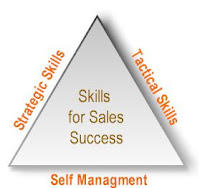
3. Establish Regular Columns and Features — A key to sustaining ongoing value is to institute recurring columns and topic features. Subscribers will know what to expect and it also allows you to plan and focus the content and develop a real position and expectation in recipients' minds.
4. Table of Contents — If you have more than two articles include an “In This Issue” section at the top of your newsletter. Give them a quick sense of what the articles are about and provide a link down to each article within the newsletter.
5. Use Short Teaser Articles — For articles longer than three or four paragraphs, use short “teaser” introductions that whet your reader’s appetite and motivate them to click through to the entire article posted on your Web site. This makes it easy for readers to determine their interest in the topic and enables you to track which articles and topics are of most interest.
6. Sidebars — Use sidebar boxes and columns for promotional and supporting information that is not the primary focus of the newsletter. This includes company and new product information, news, events, resource links, brochure links, etc. This enables the reader to easily find this information while clearly separating it in their mind from the primary editorial value of the newsletter articles.
7. Have a Personality — Just because you are producing a corporate newsletter doesn’t mean it can’t have a personality. You want the reader to have a sense that there are humans on the other end of the newsletter. Establish someone as the editorial face of the newsletter and don’t be afraid to have them interject some humor and personal flavor. Humor can be great, but be careful not to offend.
8. Tips and Best Practices — In our experience B2B readers love “tips” and can’t get enough of them. No matter what profession, workers are always interested in practical ideas and best practices they can put to use. Consider including a Quick Tip feature and focusing some of your articles around actionable tips.
12. Use Click-Through Stats to Refine Editorial Focus — Continuously monitor which columns and type of articles are driving the most clicks. Use this information to refine both topics and editorial style.
19. Feedback — Provide a “Feedback” link after each article so that readers can easily send you feedback and suggestions for other articles.


































